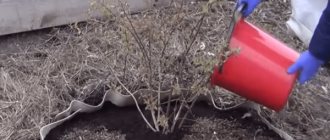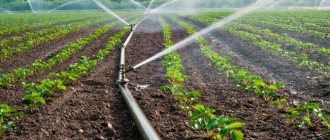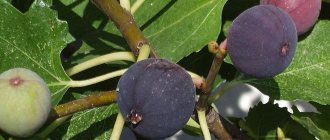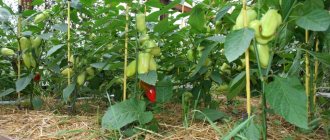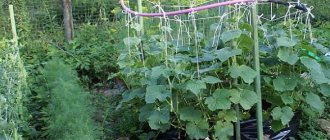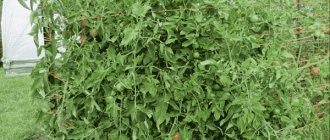- May 27, 2019
- Berries
- Maria Vetoshkina
Strawberries are a very popular berry, and almost every gardener tries to grow them on their plot. To ensure a satisfying harvest every year, it is important not only to care for strawberries, but also to replant them on time. This article will tell you exactly about this: how and when to replant strawberries, how to plant them correctly, and what their subsequent care should be.
Why are strawberries replanted?
It would seem, why constantly replant strawberries? An experienced gardener has several answers to this question:
- Garden strawberries have their own peculiarity: the bushes grow and actively develop for the first 3 years, then the yield begins to decline. This means that the strawberries are getting old and need to be replaced.
- If strawberries are not replanted for a long time, the bushes begin to hurt. Gradually, various pests and pathogens accumulate in the soil in one place, which have a bad effect on the crop.
- Every year the buds with tendrils rise higher and higher above the ground. Because of this, the bushes lack nutrients, there are fewer flowers, and the berries become smaller.
That is, in the fourth and subsequent years the strawberry yield will be noticeably lower, and this is the main reason for replanting it. Therefore, the question of when to replant strawberries can be safely answered: after 2-3 years of growing in one place.
This procedure applies to both remontant and regular varieties. It renews and rejuvenates strawberries. At the same time, it is important to remember that when transplanting old bushes from one place to another, you will not achieve the desired result - you need to plant new plants.
Strawberries' bad neighbors
When choosing a place for strawberries, also take into account the fact that not all crops can get along with them.
Primary requirements:
- Nutrition. Do not plant near crops that require similar nutrition. Otherwise, this will lead to insufficient development of both plants.
- Watering mode. Neighboring crops should have the same watering time.
- Shading. Plants that rise above the strawberries will take away some of the solar energy so necessary for the proper development of the fruit.
- Related plants. Green pets of the same family will be affected by the same pests and diseases, which will lead to a massive spread of both.
It follows from this that bad neighbors for strawberries will be:
- Cabbage
- Raspberries
- Onion and garlic
- Nightshades and cloves
Strawberries tolerate well the proximity to such crops as:
- Parsley
- Salad
- Radish
- Carrot
- Spinach
How to plant strawberries in spring
The timing of this procedure is affected by the weather conditions of the region. The soil temperature should be 7-9 degrees. It is at this temperature that strawberries take root well. In central Russia this time is from late April to early May.
Spring transplantation has its advantages and disadvantages. The advantages include the fact that in this case the root system of the plant will be fully formed before winter, and the plant itself will grow and strengthen.
An obvious disadvantage of spring replanting is that in the first year there will be few berries on the bushes.
How to properly plant strawberries in spring? This is done in two ways: by dividing the bush or by seedlings grown from seeds. It will not be possible to plant strawberry tendrils, since they only grow in summer.
Methods for planting strawberries and detailed instructions for them
Depending on the variety and size of the plot, the optimal strawberry planting scheme is chosen.
In film tunnels
To get an early harvest, seedlings are planted in film shelters:
- Install film “tunnels” immediately after the snow melts.
- Between adjacent frames - metal or plastic, leave gaps of 1 m.
- Lay out the site according to a 2-line scheme. Between lines - 25-30 cm, between neighboring bushes in a line - 30-40 cm.
- Place plants in a checkerboard pattern.
Landing in the tunnels has been carried out since April. It is recommended to remove flower stalks so that the plant does not lose vigor. The plants are watered, loosened - all standard agrotechnical practices are performed. By autumn, powerful, highly productive bushes will grow under the film.
Advantages of growing in a tunnel:
- plants are protected from excess ultraviolet radiation;
- protection from cold winds;
- a favorable microclimate is maintained under the film;
- the ripening period is reduced;
- it is easier to control the composition of the soil.
Disadvantages: it is necessary to constantly ventilate the tunnels, monitor humidity and temperature.
Under agrofibre (black covering material)
Planting strawberries under black covering material radically solves the weed problem. Procedure:
- Build beds and apply drip irrigation. The hoses are laid under the film. The width of the beds is at least 80 cm.
- Place the covering sheet on the beds and secure it on both sides, sprinkling it with earth and pressing it down with something heavy.
- Make cross-shaped holes in pre-designated places - approximately 10 cm in length. The distance between adjacent slots is 30 cm.
The covering material can be black or two-color. Black and white material is laid with the white side up - this creates a more favorable temperature regime.
Advantages of the covering method:
- weeds do not grow through agrofibre or film;
- the whiskers do not take root and are easy to remove;
- the berries do not come into contact with the ground, so they are always clean;
- plant roots develop well;
- the bushes have little contact with the soil, practically do not get sick, and there is no need to treat them with pesticides;
- In winter, plant roots feel more comfortable under cover.
Watch a video about planting strawberries under black covering material below:
In the greenhouse
Strawberries are grown in a greenhouse in one of the following ways:
- in the classical way - in the ground;
- in pots;
- in plastic bags;
- on vertical beds.
In the greenhouse, you can arrange horizontal and vertical beds, and the latter option allows you to use the space more rationally and economically. On one acre, when growing strawberries vertically, the same number of bushes can be placed as on 30-40 acres when planting strawberries in the usual way.
Plastic bags
This Dutch technology allows you to get up to 5 harvests per year. Procedure:
- Prepare white plastic bags 0.25-0.35 mm thick.
- Fill the bags with nutritious substrate and moisten moderately.
- The bags can be placed in a greenhouse, in open ground, horizontally or vertically.
- Make holes 9 cm wide in the bags.
- Plant the seedlings into the holes. There should be at least 20 cm between neighboring bushes.
This method of growing is productive, strawberries suffer less, and there are no weeds at all.
Vertical bed
This planting option is good when there is a shortage of space. The procedure for constructing a vertical bed from a plastic pipe is as follows:
- Take a large diameter plastic pipe and a smaller one.
- Insert a tube with pre-drilled irrigation channels into the center of the large pipe.
- Make holes in the pipe at a distance of 20-30 cm from each other. Strawberries will grow from them.
- Provide a drainage layer at the bottom so that water coming from above does not accumulate in the lower part of the structure.
The method allows you to save space, without weeding and loosening. The structures have an attractive appearance. Vertical beds can be built from any available material; this is a very profitable planting method that deserves the attention of our gardeners. You can also make vertical beds from old car tires, stacked one on top in the form of a pole, or from a plastic barrel.
Planting seedlings in open ground
It is recommended to plant strawberry seedlings in open ground in the evening or in cloudy weather. If the seedlings are in cups, then the plants are simply carefully transferred from them into pre-prepared holes. Seedlings with ACS may have problems with survival, so the technique for planting them is slightly different from planting seedlings with ACS.
When planting seedlings with bare roots, you have to perform several additional manipulations:
- trim the root system if necessary;
- Carefully immerse the bush in the hole and straighten the roots;
- First pour water into the hole, and then immediately sprinkle the roots with soil and compact it.
With a standard planting scheme, the following parameters are maintained:
- hole depth – 12-15 cm;
- the distance between adjacent holes is 30-35 cm;
- the distance between rows is 40-45 cm.
Depending on the chosen planting method, the above parameters may change. There are the following planting schemes:
- One-line. The distance between bushes is 15 cm, between rows is 60 cm.
- Two-line. Between bushes - 20 cm, between rows - 30 cm. This technique is more often used for summer rather than spring planting.
- Carpet. Only 7 cm are left between the bushes, 30 cm between the rows. A favorable microclimate is created on the plantation, and with such planting there is simply no place for weeds to grow. Disadvantage: the berries produced are small.
- Bush. The bushes have plenty of room to grow, and the berries are large. If you look from above, the bushes form rectangles measuring 50x70 cm.
- Nesting. One bush is planted in the center, and 6 others - around it, the distance between neighboring bushes is 10 cm, between nests - 30 cm.
Planting by seeds
In order for seedlings grown from seeds to be transplanted in the spring, sowing begins no later than February-March. Seeds sown in May-June produce seedlings, which are used to grow berries in winter - in greenhouses.
Procedure:
- To make the seeds germinate faster, they are soaked in melt water for 2-3 days. Strawberry seeds are very small, so they are first laid out on some fleecy surface. For example, cotton pads or filter paper are suitable. Then the seeds are immersed in water poured into a shallow container.
- The water is drained and the container is covered with glass/film. Place in a warm, well-lit place. Until the sprouts appear, add water little by little so that the seeds do not dry out and so that mold does not develop.
- When sprouts appear, the seeds are planted in the soil using a match or toothpick.
Watch a video about growing strawberries (garden strawberries) from seeds:
Summer and autumn transplant
At the end of summer, it is also possible to transplant strawberries, but this must be done after harvesting. During fruiting, all the plant’s energy goes into the formation of berries, and the tendrils and young shoots are weakened during this period. As a rule, transplantation lasts from the end of July to the end of August.
Summer replanting also has its advantages: before frost, the plants have time to take root, and with the onset of spring, all their energy will be spent on a new harvest. It is important not to replant strawberries in hot weather.
Transplanting in the fall is the most favorable for the plant, and many gardeners choose it. Advantages of autumn planting:
- Next summer there will already be a good harvest on the young bushes.
- Planted strawberries do not require special care.
- Bushes that overwinter and begin to grow in the spring will be resistant to low temperatures.
- In the spring, at the peak of work, there is no need to waste precious time on strawberries.
How to plant strawberries in the fall? It is important to choose the right moment so that the strawberries take root before frost. As a rule, autumn transplantation is carried out in September-October. The main thing is to plant the bushes about a month before frost, but at least 3 weeks should pass after the full harvest.
Autumn planting is possible by dividing the bush or using a mustache.
Timing for selecting seedlings
Recommended distance for planting strawberries in the photo.
To obtain a high-quality harvest, you need to choose the right seedlings.
The best seedlings are considered to be the stepsons and rosettes that form during the first half of spring - before flowering and active growth of strawberries begins. Also, the optimal raw materials for planting are considered to be stepsons that have grown by the end of summer - when the air temperature drops and the humidity level rises.
It should be noted that you cannot choose an old or too young plant. Young strawberries have not yet entered an active form of development, and the old ones have already reduced their productive qualities, so such seedlings will be of no use. The optimal age of the bushes is one and a half years, in extreme cases, no more than two years.
When to plant?
Planting a strawberry seedling at the end of April.
For the middle zone, the norm is a landing that begins approximately from the fifteenth of April to the fifth of May, or during the period from the twenty-fifth of July to the fifth of September. In hot climates, it is possible to carry out the procedure in the first half of March due to the fact that conditions are milder in the south - warming occurs quite early. Completion: end of October. In order to give the crop the necessary time to adapt, autumn planting is the best option.
However, if the climate is characterized by little snow and cold winters , in addition, the site is located in an open area that is constantly exposed to winds, the event should be planned for the spring. In this case, there will be three full months for long-term adaptation and normal further development.
How to plant remontant strawberries
Gardeners love remontant strawberries for their early and abundant fruiting. Despite the fact that it is grown from seeds, the harvest can be harvested before frost. At the same time, the yield is quite high: up to 1 kg of berries per 1 sq. m. Planting is carried out in late April-early May.
How to plant remontant strawberries in the spring? Before planting, seeds should be soaked in water or a growth regulator. Broken bricks are placed on the bed as drainage, and then a mixture of humus, river sand and garden soil in equal proportions.
After this, you can sow the seeds: water the soil, make indentations every 5 cm, and bury the seeds 0.5 cm into the grooves. The top of the bed should be covered with glass or reinforced agro-film.
When sprouts appear, the ends of the roots need to be pinched. Repeated pinching is carried out when 4-5 leaves appear.
Planting methods for limited areas
If the garden area is limited, as an alternative to the four methods mentioned above, they resort to vertical gardening. In addition, this makes harvesting easier. The most difficult thing when growing strawberries vertically is making a supporting structure. This is not an agronomic task, but a construction one, even an architectural or design one. The easiest option is to use pots, stacking them on top of each other. But it is suitable for a small number of bushes.
A more productive use of a small area is to grow strawberries in pots hung on stands. The yield of plant products per 1 m2 increases many times compared to conventional horizontal methods. In addition, thanks to this technique, it turns out to be very beautiful to plant strawberry bushes.
The method of growing in a pyramid also helps to save space in a small area. In addition, in the spring, in a multi-tiered bed, the soil warms up faster, and accordingly, the berries ripen 1-2 weeks ahead of schedule. In warm regions, you can enjoy the first berries at the end of spring. During spring frosts, the pyramid bed can be easily covered with agrofibre or film, you can even build a protective cover.
The method has proven itself well when cultivating remontant strawberries, which bear fruit until the first autumn frosts. It is possible to extend the yield period of the harvest by simply protecting the bushes with film during a period of strong drop in temperature. Thanks to the multi-tier structure, you can place different varieties side by side without fear of confusing them - on different “steps”.
Dividing the bush
As a rule, large bushes that are 3-4 years old are divided. You can get up to 10 seedlings from them. This method is used in the following cases:
- When bushes have bad tendrils, the shoots are sluggish and unviable.
- When after winter a lot of strawberries have died, in this case the young bushes are left for harvest, and the older ones are propagated.
It is best to plant strawberries by dividing the bush in spring or summer so that the young bushes take root before winter.
How to plant strawberries from old bushes in spring? To do this, you first need to dig up the strawberries correctly: stick a bayonet shovel into each side of the bush to a depth of about 10 cm. After that, pull out the bush and shake it a little to remove the soil and exposed thin roots. Then put the bush itself in a container with water.
The shoots (horns) are separated from the mother bush quite easily, you just need to pull them. They are easy to see in the water. Double horns with one spine can be cut.
Young strawberry seedlings need to remove old and dry roots and plant only plants with light roots.
If an inflorescence is found on the bush, then it must be removed so that the plant grows and does not waste energy on fruiting.
After dividing the bush, the new shoots are very weak. In order for them to take root and have enough strength to grow, half of the foliage needs to be cut off. Now the bushes are ready for planting.
Preparing planting material
If the seedlings were purchased in protective containers, then there is time to choose the optimal time for planting . Things are different if you purchase bushes with an open root system. There is no time for delay.
What to do if the weather is bad and it’s not a good time to plant? Take dark plastic bags and wrap them around the strawberry root system. It would be a good idea to add some soil and moisten it. In this state, the seedlings can last another week. The main thing is to put it in a dark place, for example, in a cellar.
Let's move on to preparing the plant for planting garden strawberries in the spring for beginners:
- Trim excess foliage from the rosettes, leaving small ones with a bright green color. It is recommended to leave no more than 4 leaves.
- If the root system is too long, then it is better to trim it with pruning shears to 10 centimeters.
- To stimulate root growth, dip the plant's roots in a solution of Kornevin or Epin.
Planting strawberries with tendrils
This method is considered the most popular. It also has its advantages:
- New bushes retain the positive qualities of the mother plant.
- One bush produces many whiskers in a short time.
- Young rosettes take root quickly and easily.
- Such a transplant does not take much time.
This method is good to use in summer and autumn, since there are no mustaches in spring yet. It is better to take the July ones - they are stronger and more durable.
You can get up to 15 mustaches from one strawberry bush, but not all of them are suitable for use. To get healthy young plants, no more than 5 tendrils can be left on a strawberry bush, and there should be no more than 3 rosettes on them. You need to select the healthiest and strongest specimens and remove the rest.
How to plant strawberries with mustaches? Without separating the mustache from the mother bush, the rosette must be sprinkled with soil. It is recommended to water a little more often than mature strawberries. The earth around the outlet should not dry out. In order for the plant to take root even better in its new location, you can deepen a small container into the soil and plant the shoot into it. Then the rooted plant can be removed along with a lump of earth.
Choosing a strawberry seedling
When choosing strawberry seedlings, follow these rules:
- deal only with trusted sellers - nurseries and specialized stores;
- purchase varieties released in your region.
Seedlings for planting are grown independently or purchased - with a closed or open root system.
With open root system
Seedlings with an open root system (ERS) are grown in beds. Its roots are open, so they are often damaged during transportation and transplantation. The survival rate of such planting material is lower than that of analogues sold in containers.
Watch a video about spring planting strawberries with an open root system:
Signs of quality seedlings:
- the bush has 3-5 leaves;
- leaves – strong, elastic, shiny, slightly pubescent;
- leaf color – bright green, without defects;
- developed root system of fibrous type - the roots are light, 8-10 cm in length, strong, without traces of rot;
- thick horns - from 7 mm, soft light green color;
- the growth points of peduncles are developed, without damage.
With closed root system
Seedlings with a closed root system (ZKS) are sold in containers or cassettes. This option guarantees a high survival rate. Seedlings with ZKS are more suitable for autumn planting.
When buying ZKS seedlings, pay attention to the following points:
- Inspect the cups - many sellers, wanting to make money, sell seedlings with OCS as cassettes, planting them a day or two before sale in plastic containers. The authenticity of the PCL is evidenced by the ends of the roots that have grown through the drainage holes.
- Inspect the seedlings. There should be no signs of disease or damage on it.
To get seedlings yourself, tear off the extra flower stalks with rosettes from the mother bushes - leave only the 2 strongest ones. When the tendrils take root, separate the young plants and plant them in containers.
Planting material can also be obtained using the Dutch method - it is called frigo. This technique is used when breeding large-fruited strawberries. Bushes are dug up in the fall, during the initial dormant phase. All leaves are torn off. Bushes devoid of leaves are stored until spring at a temperature from 0 to minus 3 ° C.
Proper transplantation of strawberries
Even having chosen the appropriate transplantation method, not everyone knows how to plant strawberries correctly, so it is important to familiarize yourself with the rules of the procedure in advance.
First you need to prepare the bed and determine the distance at which the bushes will be planted. After planting, the strawberries are watered and fertilized. It is better to prepare all the necessary materials and devices in advance, because they make the work easier.
If strawberries are planted by dividing, then it is better to choose bushes without bushes, then the plant will be strong.
Landing distance
Since strawberries are a winter-hardy plant, they bloom unevenly. It needs to be planted in an area with constant access to light.
If there is a tree nearby whose crown shades the plant, the fruits will be small. The soil should be cultivated, without weeds.
The beds should be prepared a month and a half before planting to allow the soil to settle. If the soil is weak, then strawberries are planted to a depth of 20 cm, and in good soil the depth should be up to 30 cm.
When planting a plant in a hole, you need to straighten all the roots and sprinkle them with damp soil, and then water them. The distance between the beds should be 30 cm, and between the rows up to 50 cm. If the strawberries are of a late variety, then the distance between the rows should be up to 80 cm so that the mustache does not get tangled.
Choosing a landing site
So, you have decided to start growing and propagating strawberries. First. Turn, you need to choose a place to plant bushes. This culture does not do well in an acidic environment. Strawberries also do not like clayey, soddy-podzolic and peaty soils.
The berry will grow and bear fruit well in sunny areas where water does not stagnate, preferably with a slight slope.
Selecting predecessors is also an important step before planting. It is recommended to plant strawberries after garlic, onions, carrots, legumes and herbs. But after tomatoes and nightshades, you shouldn’t do this; you need to wait at least a year. Unfavorable neighbors are horseradish and cabbage.
Landing dates
Strawberries are planted in two terms. However, the optimal time for most agroclimatic zones is autumn or late summer. In spring, bushes are planted only in regions with short summers, when cold weather comes quickly, and the planted garden strawberries do not have time to fully take root. In this state, the berry plant will simply freeze.
More precise dates for spring planting depend on the establishment of stable heat. When the soil warms up to 10°C and the threat of return frost has passed, strawberries can be planted.
The dates for planting strawberries are in the table below:
| Regions | Landing dates |
| Middle lane | Late August-mid September |
| Leningrad region | Mid-August-early September |
| Ural | Late July-mid August |
| Siberia | End of July - end of August |
| South of Russia | October |
Strawberry planting scheme
It is important to choose the right distance between strawberry bushes when planting. The illumination of the plants will depend on this. If the bushes are evenly illuminated by the sun, then the berries will ripen together. Also, the distance between the bushes determines how much nutrients and moisture the plants will have.
There are several strawberry planting schemes:
- Bush. A fairly common method in which the bushes are planted separately. Depending on the variety, the distance between the bushes is 40-60 cm. With this method, the bushes are well lit and the berries are large. The disadvantages of this method include a large number of weeds.
- In rows. Also a very popular method. The distance between the bushes is 15 cm, and between the rows - 40-60 cm. This method saves space in the garden and reduces the free area where weeds grow.
- Carpet landing. This method is the simplest, with a minimum distance between bushes. There is very little room for weeds here, and in addition, strawberry beds with such planting create their own microclimate. But this method also has its drawbacks, and the main one is low yield. There is practically no free space between the bushes, so they are poorly lit. As a result, the berries will be smaller and there will be fewer of them.
Thus, how many strawberry bushes are there per 1 sq. m will be planted, it is up to the owners of the site to decide. You already know the basic schemes, their pros and cons.
Preparing the site for planting
Features of site selection:
- Strawberry plantations are located in well-lit areas. The desired direction of the beds is from north to south or southwest. The plot is flat or with a slope of 2-3 degrees. Lowlands are not suitable. Here the plants are doomed to disease and vegetation from the cold air.
- The best soils for strawberries are chernozem and sandy loam soils. Clay, turf and light gray soils are less favorable. If the soil is heavy, sand is added during digging to make the soil loose. The optimal acidity level is pH 5.5-6.5.
- The occurrence of groundwater is at least 0.6-1 m.
- It is recommended to plant strawberries after lettuce, legumes, cereals, radishes, beets, carrots, and parsley. Unfavorable predecessors are cucumbers, potatoes, zucchini, sunflowers, tomatoes, Jerusalem artichokes.
Strawberries are not grown in one place for more than 3-4 years. Re-planting on the site - after 4-5 years.
How to prepare a landing site:
- In autumn, dig the soil 30 cm deep. Be sure to remove weed roots from the soil.
- Apply fertilizers - organic and mineral. The best option is manure or compost. The most valuable manure is horse manure. Fertilizers are spread around the area before digging - 2 buckets per 1 square meter. m. Add a glass of ash to each bucket.
- A month before planting, water the ground with hot lime (+70°C), making a solution from a bucket of water and 500 g of lime. Add copper sulfate - 50 g. Per 1 sq. m – 1 liter of solution.
- Add humus and ash to depleted soils just before planting.
There is another option for preparing the soil:
- In the fall, sow green manure in the area prepared for strawberries. Frosts will destroy sprouted plants - usually beans or lupines are sown, and they will turn into biomass, which, when rotted, enriches the soil.
- In the spring, dig up the soil and apply fertilizer - humus or compost with the addition of ash (a glass per bucket).
Transplantation process
You cannot simply transplant strawberries from place to place, since the yield will not increase in this case. Additional work is also required here.
1. Fertilizer
When preparing the soil, it is necessary to feed it. This way the young bushes will take root better.
For one square meter of bed you will need:
- 5 kg of organic fertilizers (manure, compost, humus);
- 50 g of superphosphate - it contains many chemicals that help the plant grow and protect itself from diseases;
- 25 g of ammonium sulfate - it contains a lot of nitrogen, which is necessary for plant growth;
- 15 g of potassium sulfate - helps plants survive the winter safely.
To ensure that the fertilizer is evenly distributed, after applying it, you need to dig the bed shallowly. The day before planting the strawberries, the bed should be well watered.
2. Trimming
Replanting is always stressful for a plant. To adapt, the bush needs a lot of strength and nutrients. That is why it is better to remove the excess. Be sure to remove damaged leaves and mustaches, as well as excess greenery. You can leave 3-5 young leaves on the bush.
3. Processing
When planted, the plant weakens, so it needs to be treated against diseases and pests. To do this, you can use chemicals or folk remedies. Among agrochemicals you can use o or “Fitosporin”. They need to be diluted according to the instructions.
Among folk remedies, a decoction of tomato tops is quite popular: 1 kg of leaves is brewed in a bucket of hot water and left for about 5 hours, after which it is brought to a boil. When the broth has cooled, you need to add half a piece of laundry soap and another bucket of water. Lightly pour this mixture over the strawberries.
4. Mulching
In order to have fewer weeds in strawberries, many gardeners resort to a trick: they plant the crop under a covering material, or rather, cover the free space between the bushes with the latter. For this, black spunbond or film is used. Spunbond lasts longer, but film is cheaper. The black material does not transmit sunlight, as a result of which weeds do not grow under it.
Caring for strawberries after transplantation
We figured out how to plant strawberries, but after this procedure the bushes need special care.
In the first 15 days, while the plants take root, they need to be closely monitored. Experienced gardeners give the following recommendations:
- Constantly maintain soil moisture - if there is no rain, then water every day.
- In hot weather, cover young bushes with paper caps to protect them from direct sunlight.
- Constantly loosen the soil so that oxygen and moisture reach the roots.
In about two weeks, the young bushes will already take root, but it will finally be clear whether the plant has taken root or not in about a month.
When can you plant strawberries?
The right time for planting strawberries is the month of July. All work should be carried out early in the morning so that the plant is not damaged by sunlight.
To properly plant strawberries, you should first prepare for this. To do this, you need to select several bushes from those plants that previously brought a good harvest. As soon as they bloom, you should remove the flowers from them.
You won't get the berries right away, but they will produce whiskers with many rosettes. A single mother plant can produce up to 30 bushes.
Until mid-summer you only need to water. After you have seen that the rosettes have produced 3-4 leaves and the roots have grown, they are developing separately from the plant, the strawberries need to be planted.
